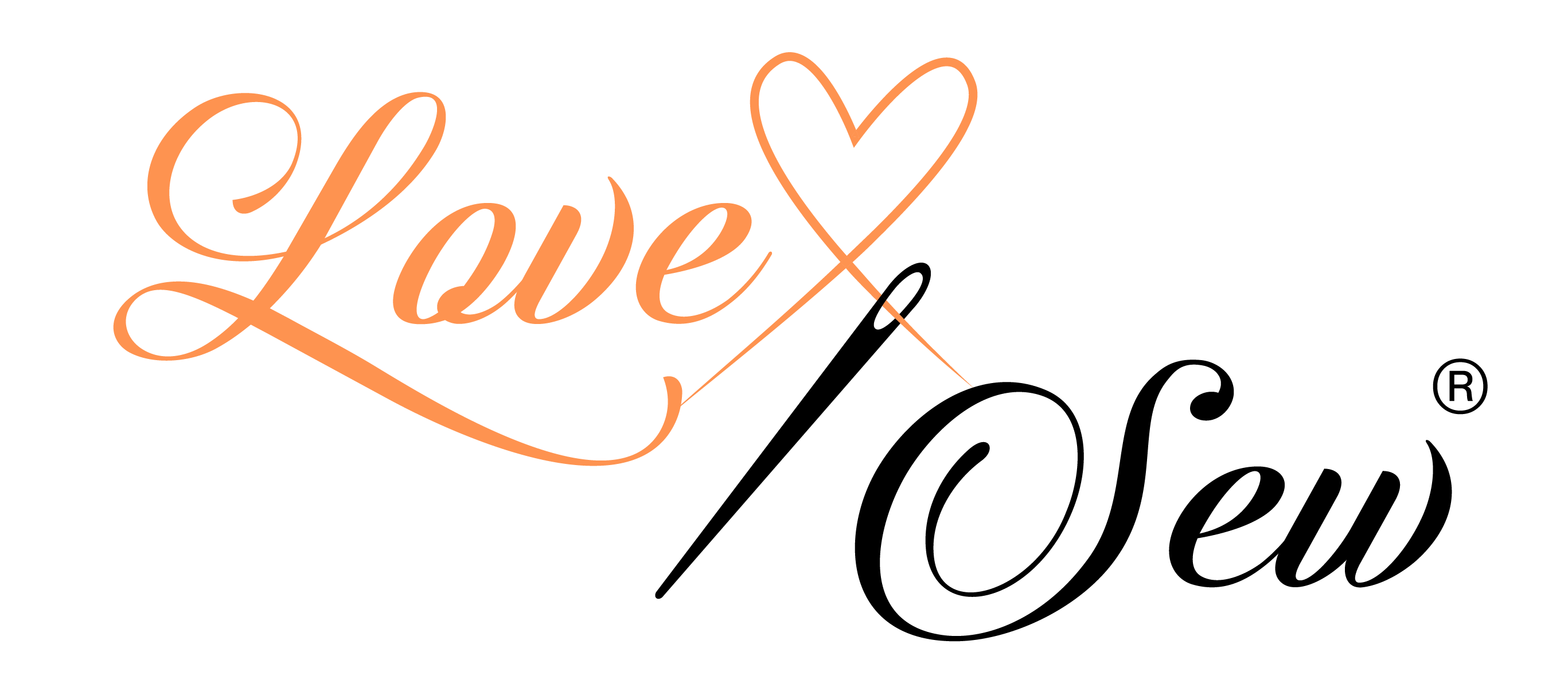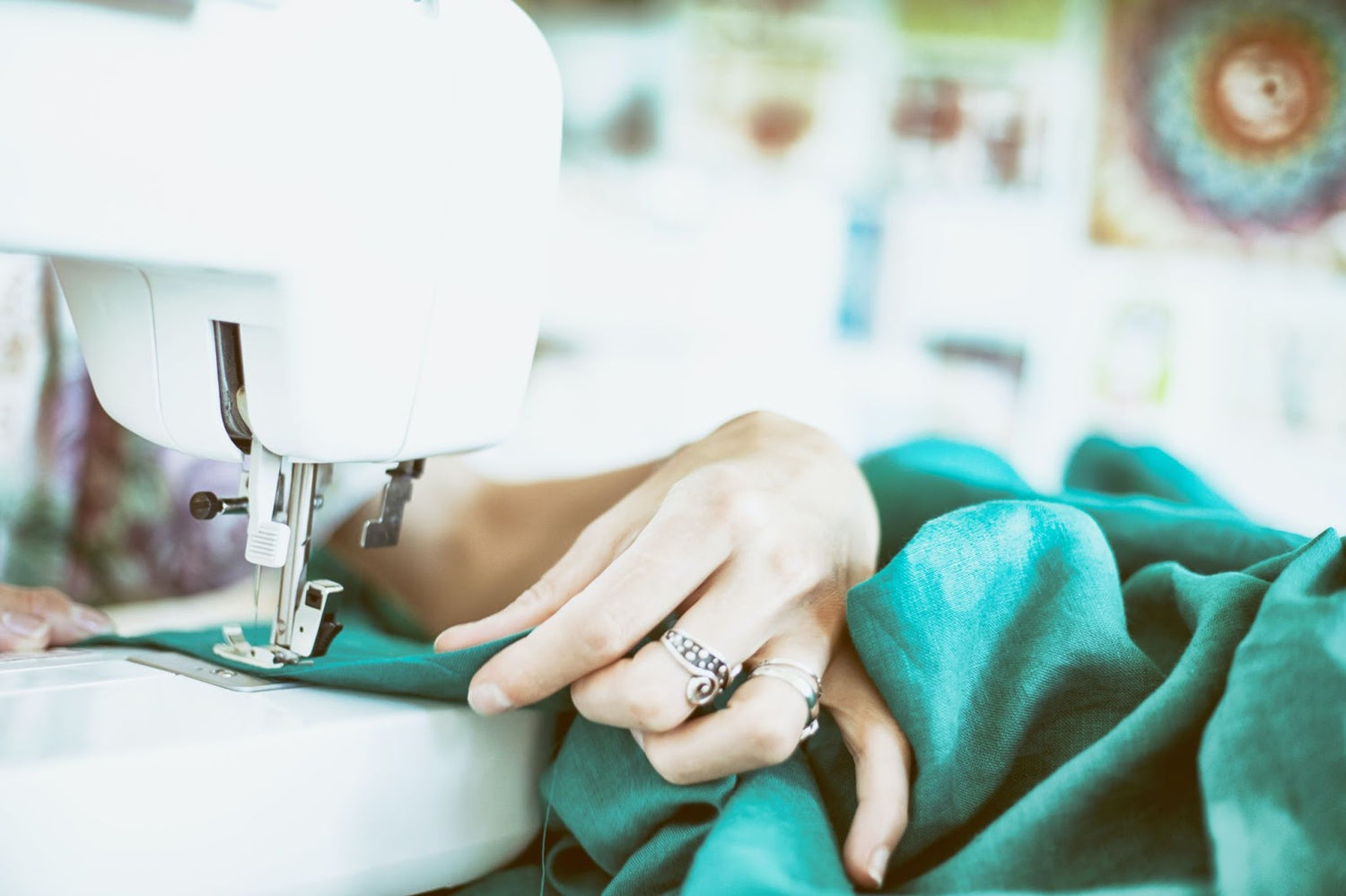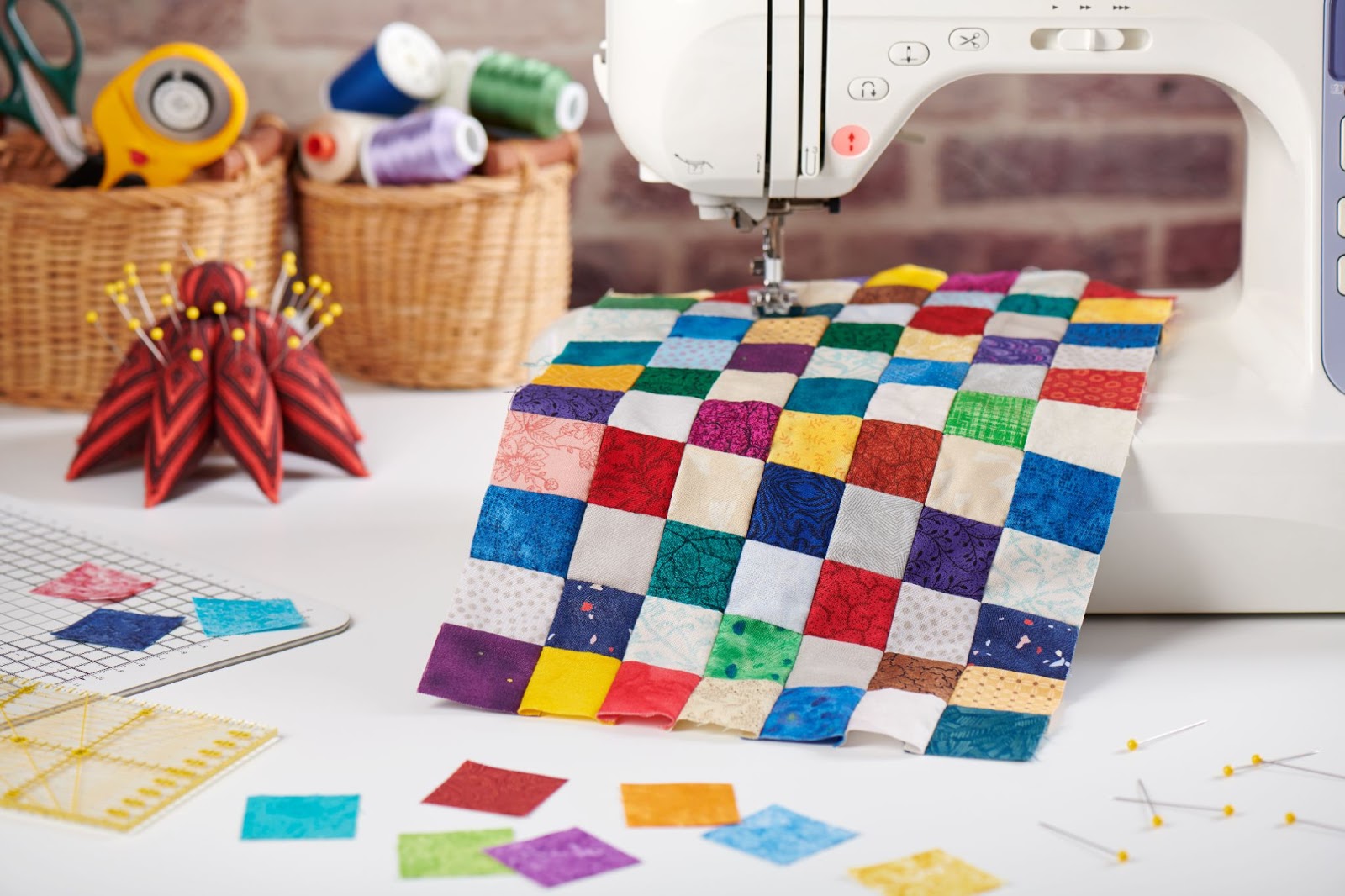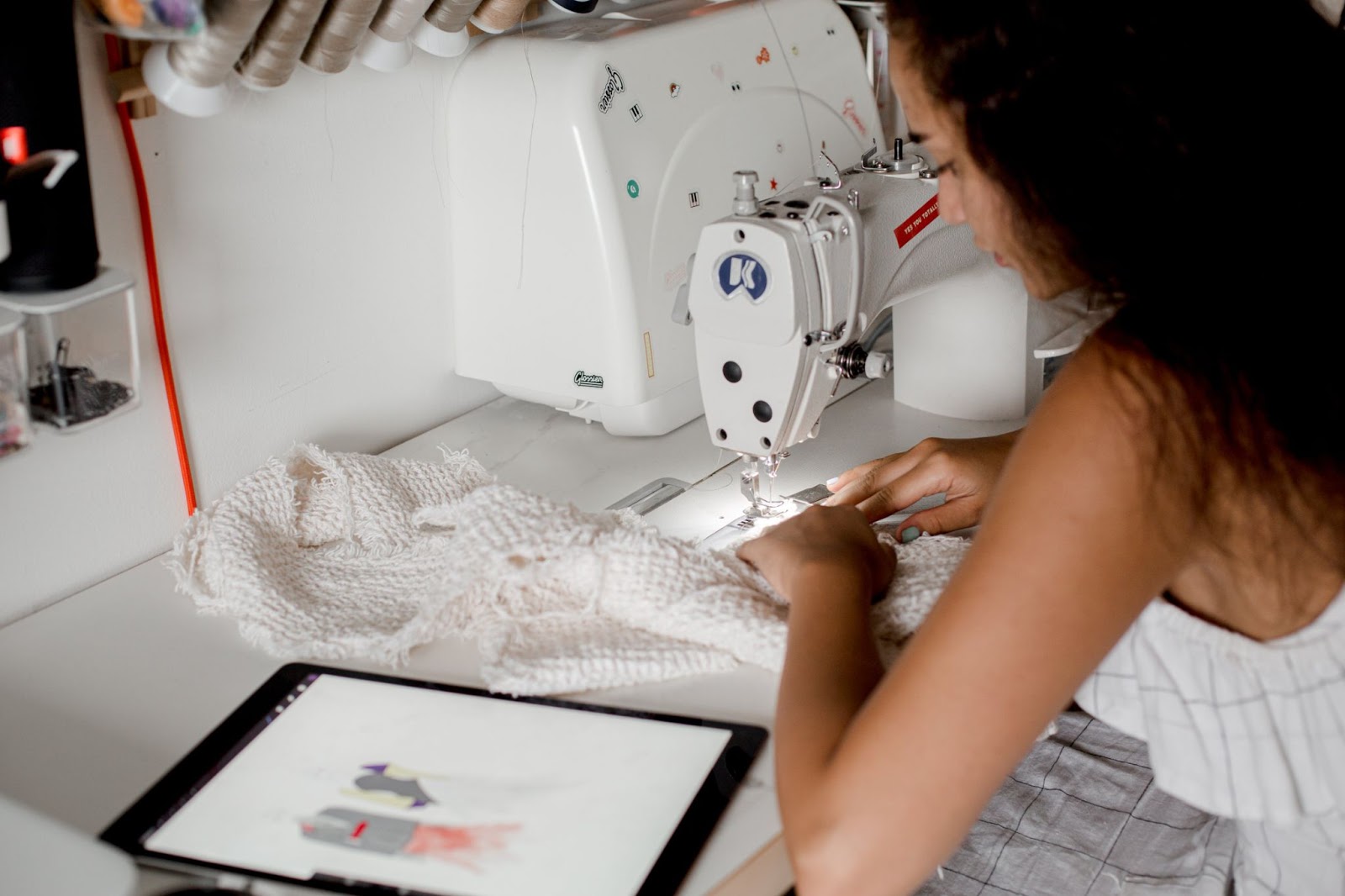If you’re completely new to the sewing world, you’re probably feeling a whirlwind of emotions. Excitement to get started, coupled with anxiety about all the things you’ve yet to learn. But have no fear! We here at Love Sew are here to guide you. In this article, we’ll give you all the information you need to turn yourself from a novice seamstress to a professional.
Getting Started: The Materials You Need
Sewing requires some investment upfront in materials. Namely, you’ll need to purchase a sewing machine (hand sewing is wonderful, but you’re much more limited in the types of projects you can do). There are a few things to consider before purchasing a sewing machine.
Considerations For Buying a Sewing Machine
-
What is your budget? There are tons of sewing machines available for a variety of different price points. Inexpensive machines are usually smaller and lighter but have less power and won’t have as many functions. Higher-end machines come with all the bells and whistles and are very powerful, but tend to be bulkier and larger.
Decide what you’d be willing to spend on a sewing machine, and do some research on what types of machines are in your price range. -
What types of projects do you plan on working on? Are you more interested in garment-making or quilting? Do research on what functions are necessary for the types of projects you’re interested in. For example, if you’re a new quilter, you want to look for a machine that has easily lowered feed dogs for free-motion quilting.
-
What accessories does this machine come with? Some machines come with a variety of different needles and feet, while others just come with the basics.
-
How heavy is your machine? The weight of your sewing machine matters, especially if you’re planning on taking it back and forth to classes and sewing groups. We recommend lightweight machines if you’re planning on transporting them.
-
Is this type of machine fairly common, or is it rare? Purchasing a high-tech imported sewing machine may sound like fun, but if it breaks down on you, you’ll probably have a hard time getting it fixed. Also, some places offer new sewing machine owner classes for common types of machines, so keep that in mind if it’s something you’re interested in.
- What can your machine actually do? What kinds of stitches can it perform? What types of special functions does it have?
Other Supplies You’ll Need

In addition to the actual sewing machine, there are some other supplies we recommend investing in before you start your first project:
- Scissors: A great pair of fabric scissors is a must-have for sewing. These scissors should be used for fabric only, nothing else! For more precise cutting, we recommend a rotary cutter (learn how to use a rotary cutter safely here).
- Pins: Another very basic supply you’ll need are pins. Pins are essential to keeping your fabric in place and helping guide where you sew. A pincushion is also recommended for storing, so you don’t accidentally poke yourself.
- Seam Ripper: Obviously, we want to avoid having to rip out our seams. But it is necessary, and you'll probably need to do it more often than you think.
- Bobbins: Bobbins help to form the bottom thread on your sewing machine. Each time you change thread colors, you’ll have to wind a new bobbin. Your machine should come with a bobbin or two, but having extra on hand eliminates the hassle of having to unwind and rewind every time you need a different color of thread.
- Thread: Obviously, a sewing machine won't work without thread! There are a huge variety of different types and colors of thread, each suited best for different projects. We recommend grabbing black and white thread to begin with and maybe a few other colors you see yourself using often.
- Measuring Tape: This is a no-brainer. Sewing involved a lot of precision and measuring, so you’re definitely going to need a handy measuring tape.
- Fabric: This is the fun part! There are a million different fabrics out there, all in fun patterns and colors, just waiting for you to sew with them. We recommend starting with something medium in weight, with little to no stretch. These types of fabrics are easy to work with and forgiving of mistakes.
- Extra Needles: Sewing machine needles break very easily, especially when you’re unfamiliar with your machine. It’s a good idea to have a few extra on hand.
Learning How To Use A Sewing Machine

Once you’ve got all your materials together, you’re ready to get acquainted with your sewing machine. Like any machine, sewing machines are made up of a variety of complex parts, but once you understand how the parts function, it’s simple to understand how to use. Reading up on how sewing machines work will help you out a ton.
The Basic Parts of the Sewing Machine
Start by familiarizing yourself with the basic parts of any sewing machine. The most important features you need to know are:
- Spool pin: Located on top of your machine. It holds a spool of thread.
- Bobbin winder mechanism: This is usually located on top of your machine and is used to wind thread from your spool onto your bobbin.
- Stitch Selector: This allows you to select the type of stitch you want and control the length and width of your stitches. This will look different depending on if you have a computerized or manual machine. Consult your machine’s handbook to find out how to use these functions.
- Hand wheel: The large knob on the right side of your machine that manually raises and lowers the needle.
- Reverse stitch lever: The machine will sew in reverse while the lever is pushed. It may look like a small lever or a button.
- Power switch: The off-on switch is usually located on the right side of the machine, beneath the hand wheel.
- Thread take-up lever: The top thread passes through the thread take-up lever. It moves up and down with the needle.
- Presser foot: When lowered using a lever on the back side of the machine, this foot holds the fabric in place.
- Bobbin case: This is where the bobbin is held during sewing. It’s usually under the needle and protected by a small cover.
- Feed dog: The feed dog pulls fabric forward while sewing.
- Needle: A needle pushes the thread through the fabric to form a stitch.
- Needle plate: A metal plate beneath the needle and presser foot. It has an opening for the needle to pass through as it stitches and another for the feed dogs to emerge and help move the fabric forward during sewing. Also called a throat plate.
Once you’ve familiarized yourself with your sewing machine, you can begin prepping your machine for use. This involves two things: winding the bobbin and threading the machine. You can find detailed instructions for both of these tasks on our blog or in your sewing machine’s manual. Once your machine is all threaded, you’re ready to embark on your first project.
Sewing Projects For Beginners

You’ve got your machine, you’ve got your supplies, you’re ready to get started! But… what should you sew? With so many incredible projects and forms of sewing out there, how do you know where to start?
There are many craft stores that offer sewing lessons for beginners. Usually, in these classes, they’ll pick a simple project to guide you through. Or, get a friend or relative who knows how to sew to show you the ropes.
If you prefer to teach yourself, there are tons of amazing online tutorials that will teach you the basics. Start with a simple project, and work your way through it using YouTube videos and blog posts. Look for projects with straight lines, as these are the easiest to sew. Projects without complex frills or embellishments are usually best for beginners. Some great projects for beginners include:
- A simple pillow or pillowcase
- Baby blankets
- Tote bags
- Dishtowels
- Headbands or other accessories
- Scarves or other simple clothing items
- A single quilt block
The most important thing to remember as a sewing beginner is that practice makes perfect. Nobody starts off stitching like a pro. Don’t get frustrated over small mistakes, and don't give up!
Conclusion
Learning to sew can be a daunting process. It seems like there are so many things to buy and learn to use and so many projects out there to do. Luckily, we’re here to help. Absolutely anybody can learn to sew, with a little bit of practice and patience. By following our simple guides and tutorials, you’ll turn yourself from a newbie seamstress to a know-it-all in no time.
For all your sewing tools, tips, and tricks, visit us online at lovesew.com. We offer an extensive catalog of handy sewing tools, plus we publish in-depth tutorials on our blog. Visit us today and join our little sewing family.
Sources:
Buying a Sewing Machine | Sewing.org




Leave a comment
This site is protected by hCaptcha and the hCaptcha Privacy Policy and Terms of Service apply.